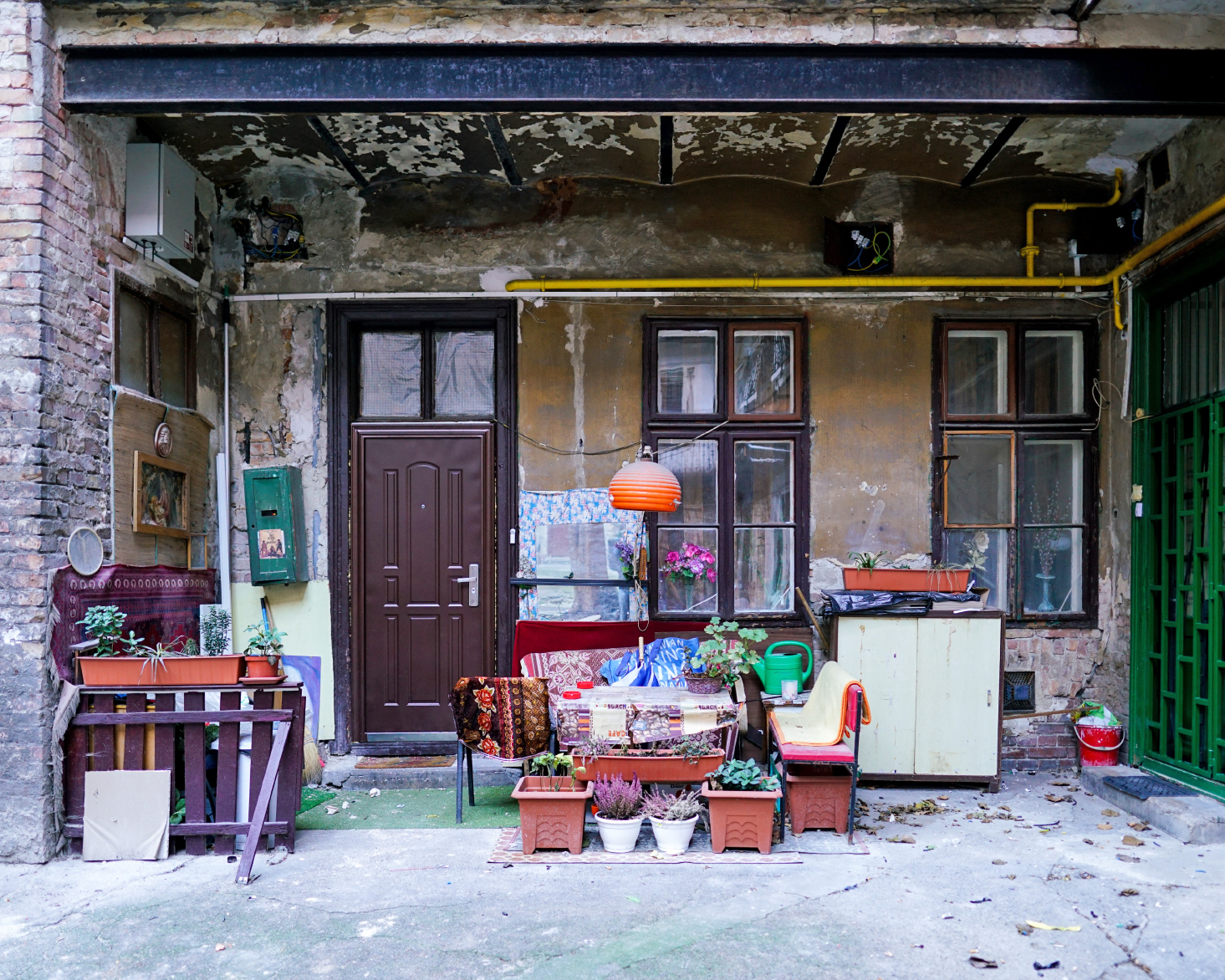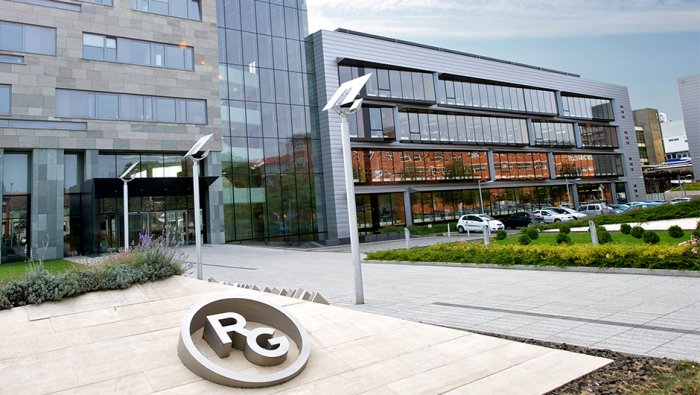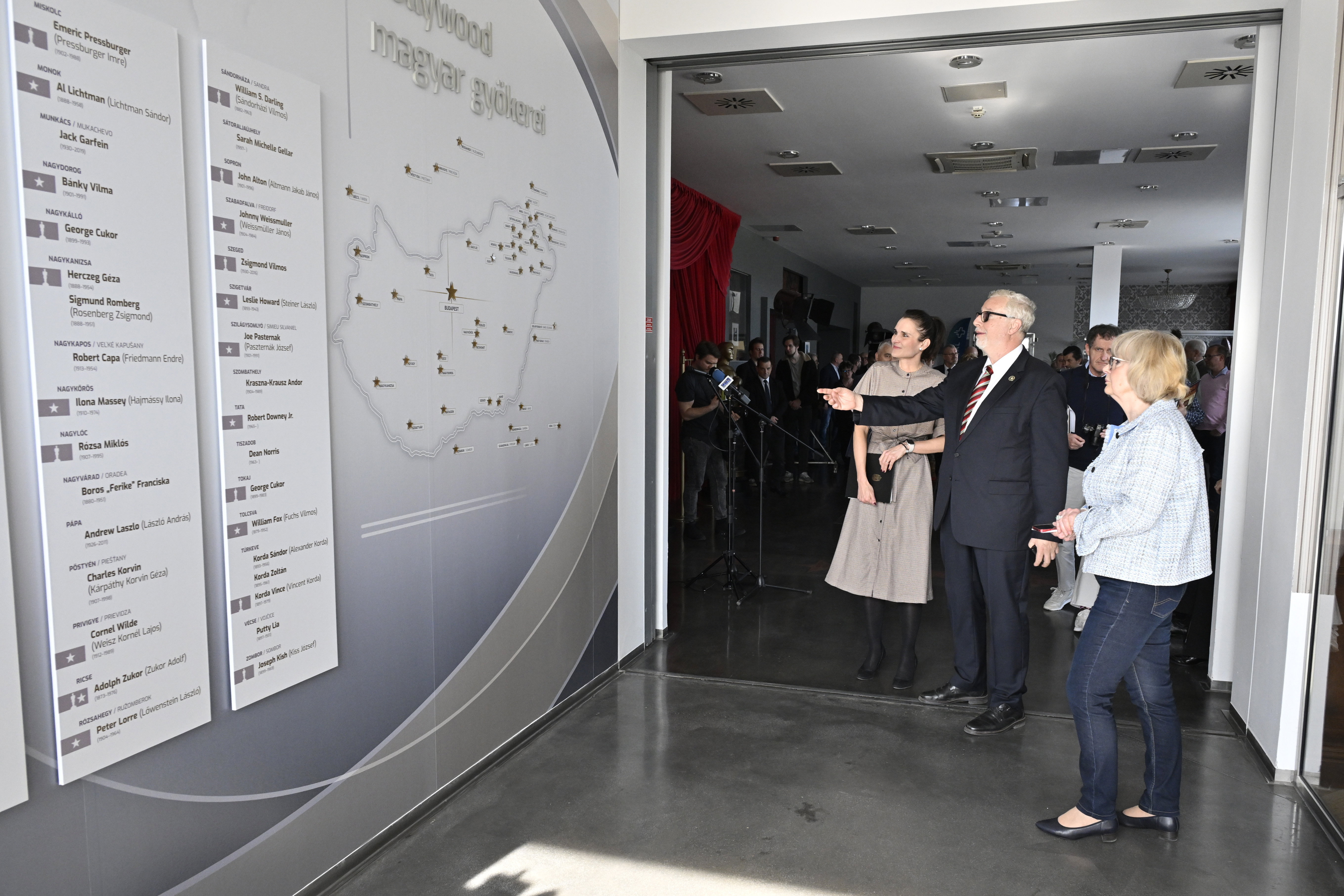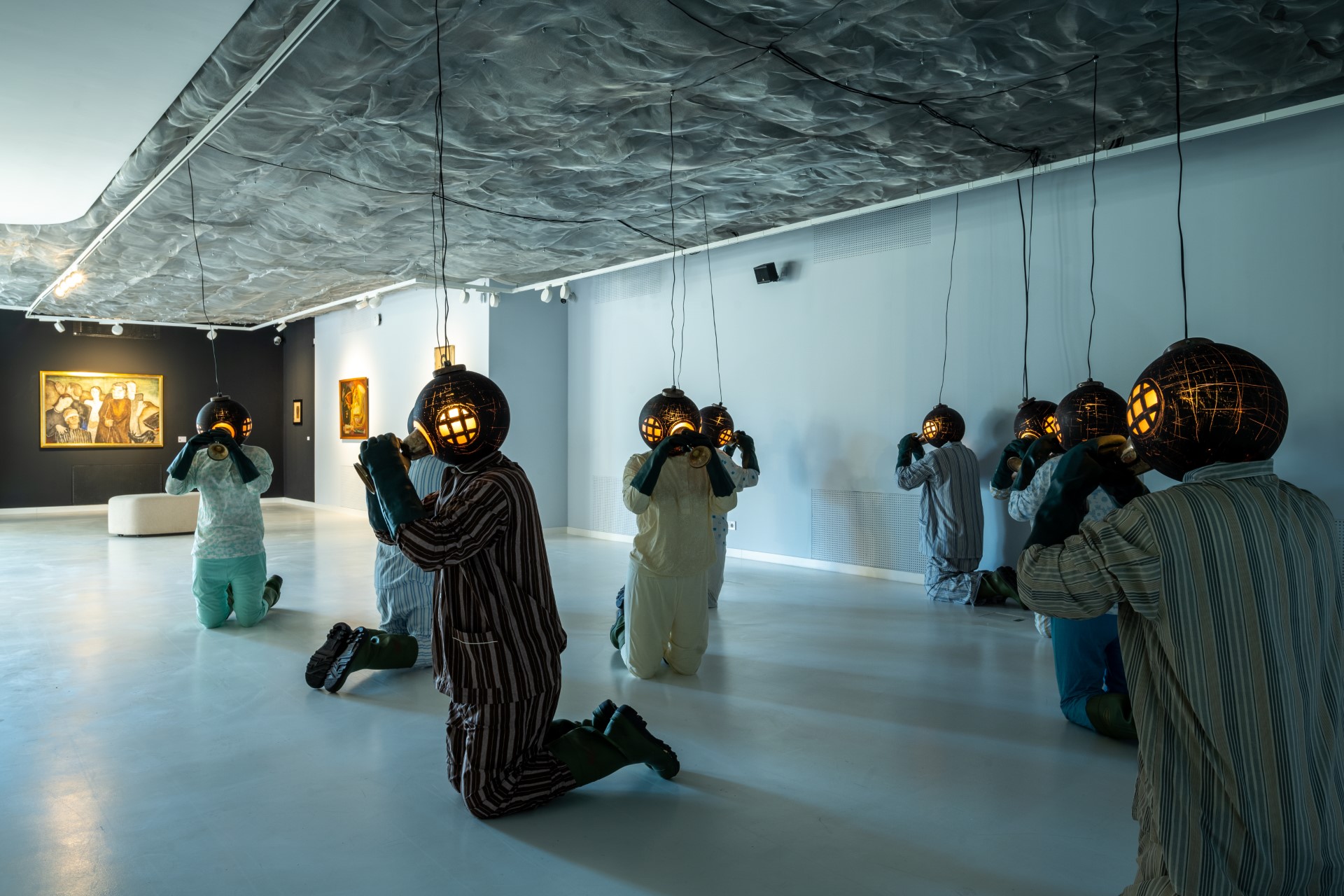Buildings Tell Tales: Budapest’s Hidden Architectural Heritage

Eszter Urbán and Vincent Baumgartner.
Photo by Kester Eddy.
An “underground” pub exhibition highlights a Swiss-Hungarian photographer’s passion for Budapest’s classical housing blocks.
Vincent Baumgartner was born in Geneva, Switzerland, to a Swiss-French father and a Hungarian mother who had defected from Budapest in 1979.
His mother, he says, was a naturally “curious person;” whenever the two visited Budapest and walked the streets, on seeing an open door of an apartment block, they would sneak inside and view the courtyard’s “secrets.”
It became a habit he could not shake off, and as a young adult, it made Baumgartner a keen observer of the architecture and layouts of living quarters. It also meant that, after a break from living in the Hungarian capital, upon his return, he noted that things were changing fast, especially in some of the older districts with poorly maintained housing.
“When I came back in 2018, I realized that many of the small details and even entire buildings had disappeared or were ‘too’ renovated,” he told the Budapest Business Journal.
“Renovation is good and very important, but it’s quite often overdone here in Hungary. In France and Italy, somehow, they are able to keep the spirit, the atmosphere of the old buildings. Here, they tend to make them look sterile; they look like hospitals,” he says.
Realizing that history was disappearing before his eyes, Baumgartner began photographing the courtyards, corridors and stairways of homes in his spare time, initially using his mobile phone.
“At first, it was more about documenting. I was entering random buildings, taking photos of all the details. I was not really seeking to take aesthetically pleasing photos,” he recalls.
And then came COVID. Lockdown meant Baumgartner, unable to travel or spend money, also had time on his hands. It was then that he bought some high-quality gear and began focusing on capturing “more serious” photos. Self-taught, he took a few lessons from a professional and then began posting his work online, always accompanying the pictures with a story about the building.

Home at Gát utca, in Pest’s District IX. Photo by Vincent Baumgartner.
Making History Tangible
“That’s why I [chose] the name “Buildings Tell Tales.” I want somehow to make history tangible to people. Those are not just walls of buildings or stairways; they have a past, a history, and somehow, they can connect us to the past. It’s something which is palpable,” he enthuses.
Slowly but surely, people began to notice his work: magazine editors asked for interviews, and inquiries arrived from former Budapest residents asking if he could track down and photograph their one-time homes.
One of the most notable came last year when a woman from the United States, who had grown up in Budapest, asked if Baumgartner could get pictures of the house where her uncle, himself a photographer, had worked before the onset of World War 2.
“The uncle’s name was László Elkán. This rang a bell because Elkán [after leaving Hungary] changed his name to Lucien Hervé. Hervé became one of the most famous architectural photographers in the world. He worked with Le Corbusier [the renowned Swiss-French architect] and took many of his photos,” Baumgartner recalls.
Naturally, being asked to supply images of the home of a giant of photography like Hervé by his niece, whom he later met in person, felt a great honor for the still-youthful photographer.
“That was really special for me,” he says of the experience.
Of course, it has not all been plain sailing. Many times, he’s struggled to get into a building, while once, he found himself locked inside a small block over a bank holiday with nobody at home in any of the apartments. Typically starting at or soon after dawn, he has made numerous visits to favorite courtyards, hoping to find them devoid of cars or other modern paraphernalia, and failed.
Early in his quest, Eszter Urbán, his long-time girlfriend, began to join Baumgartner on his forays into back-street Budapest. Though a qualified tourist guide and brought up in the largely working-class district of Angyalföld, she has learned much about the Hungarian capital through their joint work.
“It has been fascinating how many treasures are hidden behind those doors because I’d never been into the courtyards or these kinds of buildings before. I have a license as a tour guide, but it’s not [for] the inside of buildings, just the outside, the history of the city. It has opened another world for me,” Urbán says.
Shabby Properties
Inevitably, given that he prioritizes buildings needing renovation or at risk of demolition, a good few photos show somewhat run-down, shabby properties. He insists his goal is not to “take photos of decay for the sake of decay,” however.
“It’s not my goal to take photos of poverty or misery, but more to show that even in parts of the city where people don’t have lots of money, many people are trying to make the place where they live nice,” he says, pointing to an image of a dilapidated dwelling on Gát utca, a poor area of District IX, to prove his point.
Des res District II it is not; poor it may be, but it is a cacophony of color, with flowers on the porch.
“Attila József was born in this street,” he says, using the Hungarian form of the acclaimed poet’s name. “They put some small items, flowers, to decorate [the environs], and in the end, those places are much more liveable than the newly built, huge housing [projects ] which are booming everywhere in the city.
Naturally, that may not be the view of those buying those spanking new flats, replete with mod-cons, in new complexes across town.
After six years of sneaking into housing blocks and snapping vistas of corridors, spiral stairways and stained glass, Baumgartner, now aged 34, appears as fervent as ever regarding his self-appointed task.
“It’s very exciting here because the architecture is very diverse. When we go on holiday, we do the same [photograph work] when we can, but I think Hungary is really special because you don’t know what to expect behind the facades,” he enthuses.
“Sometimes you have a very freshly renovated facade, and inside there’s total decay. Sometimes, it’s the opposite. Sometimes, a building which doesn’t look interesting from the outside is fascinating inside. Again, sometimes it’s the opposite. That’s what makes it exciting.”
Buildings Tell Tales: Budapest’s Hidden Architectural Heritage features 35 of Baumgartner’s Budapest images. It is being shown at the Hintaló pub, Bacsó Béla utca 15, 1084 Budapest, and runs until mid-March.
This article was first published in the Budapest Business Journal print issue of February 23, 2024.
SUPPORT THE BUDAPEST BUSINESS JOURNAL
Producing journalism that is worthy of the name is a costly business. For 27 years, the publishers, editors and reporters of the Budapest Business Journal have striven to bring you business news that works, information that you can trust, that is factual, accurate and presented without fear or favor.
Newspaper organizations across the globe have struggled to find a business model that allows them to continue to excel, without compromising their ability to perform. Most recently, some have experimented with the idea of involving their most important stakeholders, their readers.
We would like to offer that same opportunity to our readers. We would like to invite you to help us deliver the quality business journalism you require. Hit our Support the BBJ button and you can choose the how much and how often you send us your contributions.








